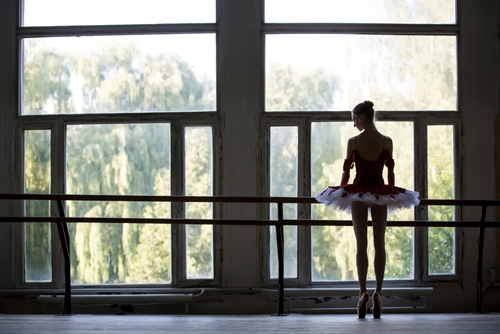You watched them don their first tutus, perfect those tricky steps and blossom into beautiful young dancers. Now, it’s time for them to spread their wings and leave your studio. It’s a bittersweet moment, isn’t it? However, there’s still one more thing you can help your students with. When dancers are considering how to best pursue a career in the arts, they’ll probably ask for your help choosing the right dance program. Pass on these nuggets of wisdom to your graduating performers to guide them down the path to success in a college dance program and elsewhere.
Dance Programs vs. Conservatories vs. Trainee Programs
One of the first steps in whittling down a dancer’s higher education options is to decide whether a conservatory is the right path. Dance Spirit magazine explained that at these intensive training programs, such as the one at Juilliard, dancers live and breathe the art. Students usually spend six to eight hours a day in dance classes, with a few other academic courses sprinkled in.
Tiffany can der Merwe, a teacher at the Ann Lacy School of American Dance and Arts Management at Oklahoma City University, explained to Dance magazine that students who enter conservatories are usually 100 percent certain that dance is what they want to do.
“There are programs where your commitment to dance is prime,” Merwe told the magazine. “Then there are other programs where you’ll be actively challenged in dance, but at the same time you’ll have to be excellent in your academics.”
This other common option for aspiring dancers is usually attained through a dance program at a college or university. This path is a great choice for students who want to explore other academic programs while earning a fine arts degree. Some dance students even choose to double-major or take a minor in another area of interest.
It is also possible that a dancer has the drive and talent to forego conservatory or university-program training, and go directly into a professional company’s trainee program. There are many factors that determine a student’s suitability for this path, and it’s crucial to be realistic about a student’s potential, as well as whether they have the mental toughness and maturity to pursue such an opportunity, should it arise.
It’s worth mentioning that, every year, a free event is held in New York City called “Dancing through College and Beyond.” It’s designed for high school students, and it’s a chance for them to meet one on one with college dance educators, alumni, and students from all over the country. It’s an incredible opportunity to network with many different schools all in one place, learn about their programs, and even apply for scholarships! If your student can make it to NYC, it’s a unique way to see what dance programs might be right for them.
As a studio owner or instructor, your dancers may very well look to you for advice on which path is better for them. And the truth is that you likely have some great insight for these aspiring performers. Give your students your honest opinion on what you think they would be best suited for. However, be sure to emphasize that they should take their own goals and desires into account as well!
Audition Processes as Peepholes
Once your students have a rough idea of which higher education path they want to take, it’s time to make a list of contending schools. Some dancers may have their hearts set on the big-name dance schools, such as Juilliard, Skidmore or the Boston Conservatory. However, this process gets tricky when students are looking for a more general college dance program – after all, these are hundreds to choose from!
If you’re working with dancers to narrow down their program options, Dance Advantage suggested that you take a close look at each contending school’s audition process. The requirements for applicants can provide you with a glimpse into what the school expects from its students and what life will be like within the program.
For example, a university that requires an audition tape, personal essay and in-person performance is likely looking for highly skilled dancers who are serious about their craft. This means that accepted students will be in classes with similarly skilled peers and held to higher standards of achievement.
On the other hand, schools with lax admissions processes may have classes with mixed-level students and provide a less specialized education to dancers.
Personal Considerations
At the end of the day, your dancers should take the same considerations into account that normal college applicants would. Are they looking for small intimate classes? Do they need one-on-one instruction? Will they be able to pursue extracurriculars? How far from home are they willing to move?
These factors will all contribute to a college dance educational/training experience, so it’s important that they don’t get overlooked. Just because a university has an amazing college dance program, that doesn’t mean it’s the right school for every aspiring professional.


